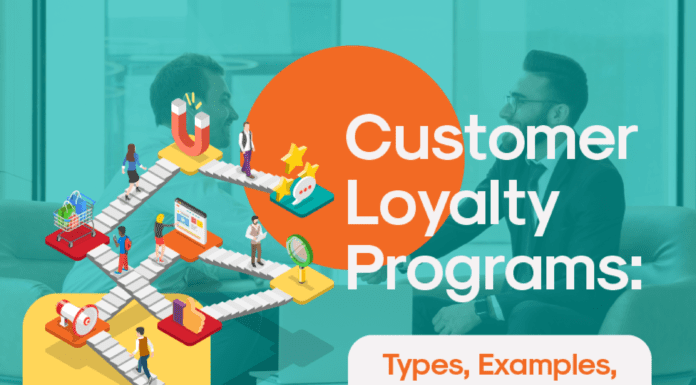According to Fortune Business Insights, customer experience management (CEM or CXM) amounted to $10.11 billion in 2021 and is projected to increase from $11.34 billion in 2022 to $32.53 billion in 2029, resulting in a 16.2% compound annual growth rate (CAGR) between 2022 and 2029.
The collection of methods companies uses to track, oversee, and organize every interaction and operation between customers and the organization throughout the customer lifecycle. It also defines what a brand looks like to the customer, compared to customer relationship management (CRM), which shows what a brand looks like to the company.
The increasing number of companies adopting artificial intelligence (AI) and augmented reality to improve their customer experiences for their buyers led to CEM or CXM’s growth.
Brands are beginning to recognize the importance of giving quality customer service to develop loyal customers and increase their presence. It’s why more businesses are investing in tools and technologies to help them expand their operations.
This article will discuss why you shouldn’t underestimate how beneficial loyalty programs are to your business.
What is Customer Loyalty?
Customer loyalty refers to a continuous emotional connection between your business and your customer, manifested by a customer’s desire to interact with and repeatedly buy from you versus your rivals. Loyalty results from a consumer’s positive experience with you and works to develop trust in your brand.
A competitor’s availability or pricing can’t easily influence or sway customers loyal to your business. Loyal customers are more than willing to pay more for your products and services, as long as what you offer meets a familiar level of quality.
What Is a Customer Loyalty Program?
A customer loyalty program is a program businesses run that provide benefits to frequent customers. These benefits can be in the type of discounts, cash backs, freebies, or other promotions. Successful customer loyalty programs reward customers who repeatedly buy from businesses, urging them to return.
Some of the customer loyalty programs’ purposes are:
- To increase business
- To improve sales and revenue
- To keep and have loyal customers
- To build a strong relationship with customers
10 Benefits of Customer Loyalty Programs to Businesses
A customer loyalty program is another way businesses market to existing customers. Business owners and marketers benefit from them as much as customers do.
Below are some of its top benefits that companies can expect to achieve.
1. Improves customer engagement
has a direct impact on a brand’s sustainability. A brand that does not connect with its customers tends to have low recall value, leading to difficulties in making a reliable brand image.
Loyalty programs are great in increasing customer engagement as customers are more likely to be open to receiving emails or other brand promotions when they are members of its loyalty or rewards programs. These programs ensure customer engagement and strengthen the brand’s and its customers’ relationship.
2. Improves customer experience
Marketing to existing customers means improving your customer experience based on their feedback and suggestions. Through loyalty programs, the customers’ expectations of earning rewards build anticipation and excitement, improving customer satisfaction. This process leads to a wholesome and positive customer experience that modern brands try to achieve.
3. Builds brand affinity and loyalty
Consistent brand engagement can aid in developing what customers think about your brand, which loyalty programs can bolster. Rewards, gifts, and incentives contribute to a positive customer experience, which increases brand affinity.
A long, consistent, and profitable customer-brand association helps to boost brand loyalty, which allows the brand to stand out in the crowd and gives it a competitive edge.
4. Increases customer retention
According to a recent study, positive customer service, like loyalty programs, increases the likelihood of customers making another purchase by about 81%. Loyalty programs increase customer retention, an asset to any business or organization as they bring more revenue.
Moreover, these customers have more chances of turning into brand advocates, representing the business as true loyalists.
5. Increases sales and revenue
Retained buyers or customers bring more profit to companies for reduced costs, helping them boost their sales and revenue. Customer retention is crucial because the cost of gaining new customers is higher than retaining existing ones. Although it takes a while, customer retention is still one of the best ways to increase a company’s profitability.
Frederick F. Reichheld and Phil Schefter’s study, where an increased customer retention rate of 5% increases profit by 25% to 95%, remains true today.
6. Increases customer lifetime value
A customer lifetime value (CLV) is the amount or value a brand or business will get from its customers during their connection with the company.
Loyalty programs directly affect CLV, significantly improving the continuity of the brand-customer relationship. These programs provide the customers with motives other than the business’s products and services to remain connected with them.
What’s more, if these loyalty programs are engaging and offer valuable rewards, it can help increase the CLV, ensuring customers’ repeat purchases for a more extended time.
7. Reduces attrition rate
Customer attrition, turn, turnover, or defection all refers to the clients’ and customers’ termination of their relationship with brands or businesses. Simply put, this refers to a company losing buyers or customers. Hence, it is a problem several businesses face.
With customer loyalty programs, the customer attrition rate decreases since it can improve customer engagement rates. Through this, customers remain connected to the brand through its rewards and incentives.
8. Promotes brand advocates
Happy customers are vocal customers. Businesses improve customer satisfaction and promote brand advocacy by incorporating customer loyalty programs.
Brand advocates influence their family, friends, and colleagues, helping brand penetration. One example of influencing new customers is through. As it creates more brand advocates, it also brings in more referrals.
9. Aids customer acquisition
Customer acquisition means bringing new customers to your brand or business to buy your products or services. But as much as possible, companies try to lower customer acquisition costs through customer retention as it is cheaper. According to data, acquiring new customers is five times more expensive than retaining existing customers.
Brand advocates from positive customer service and loyalty programs influence new customers, widen the business’s customer base, and help promote further brand advocacy.
10. Access to first-party (1P) data
Data remains a priceless resource, even despite technological innovations worldwide. Businesses can ethically source first-party (1P) data while sticking to the general data privacy compliance rules through loyalty programs.
This resource can help companies access their standing within the market, providing a better understanding of their customers and helping them design better business and marketing plans.
When joining loyalty or rewards programs, customers are more willing to share and exchange information, making it one of the best ways to extract data.
Retain Your Customers with Loyalty Programs
Competition among businesses in the digital age is fierce. Given how costly it is to acquire new customers, you shouldn’t underestimate how important your existing relationship with your customers is. Hence, loyalty programs are an excellent way to manage and sustain your relationship and connection with your customers.
Retaining customers is one, if not the number one, goal companies should strive for to increase and expand their business. They need loyal customers to maintain and grow their sales and revenue, helping them achieve their market value targets and goals.


